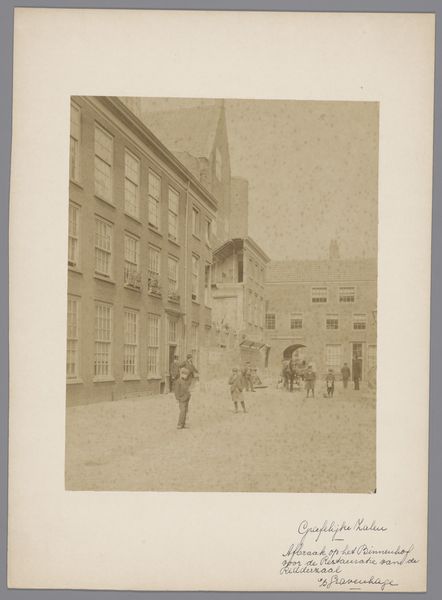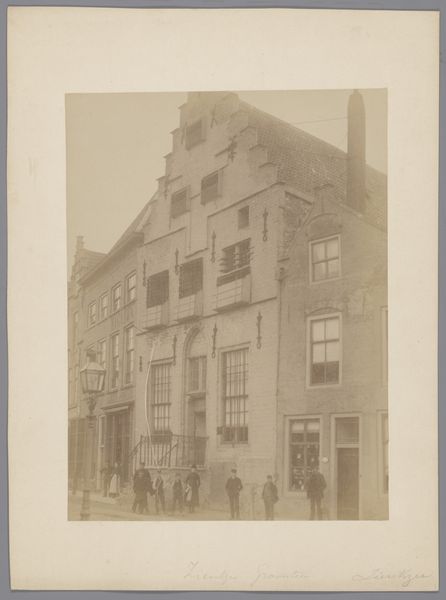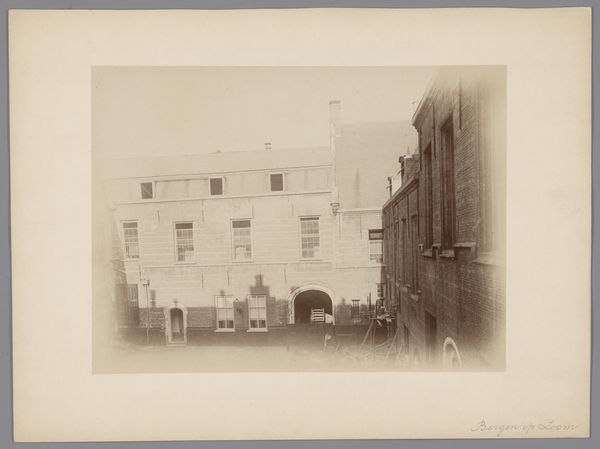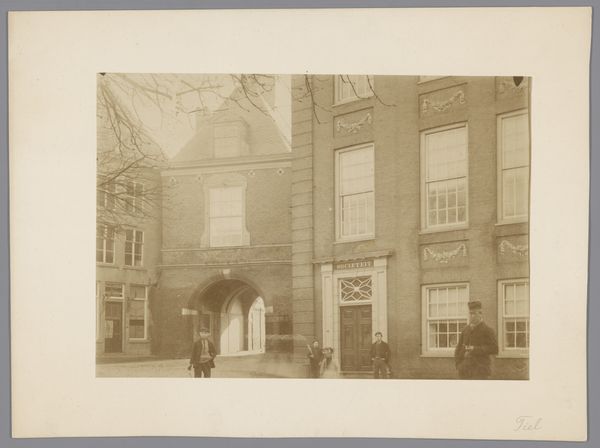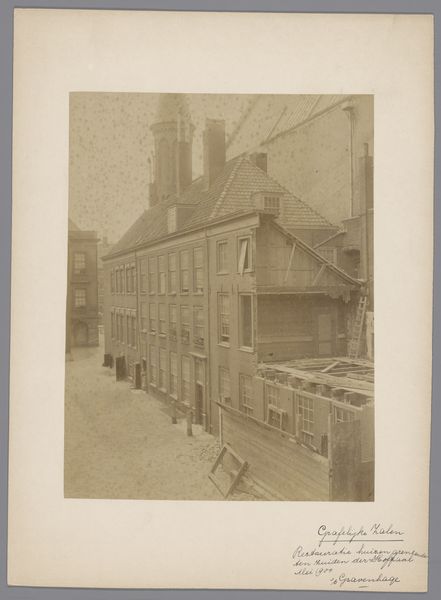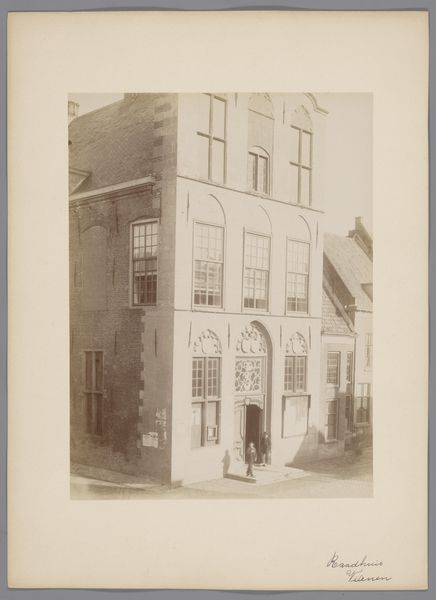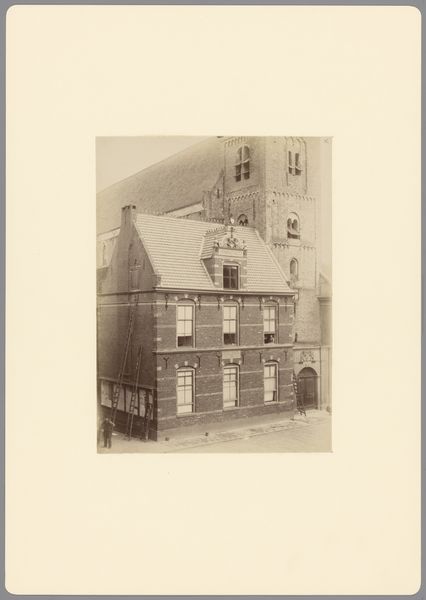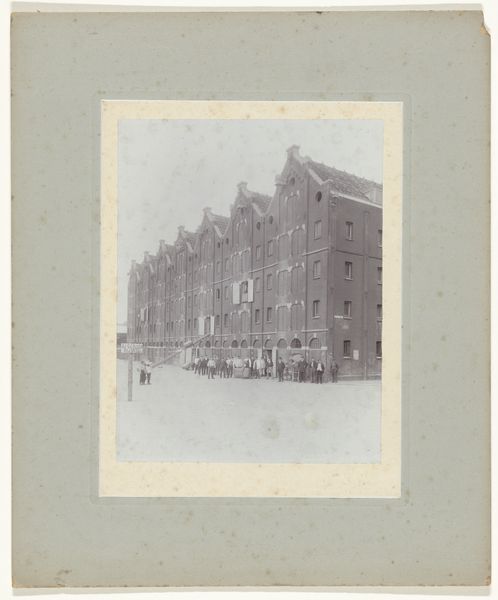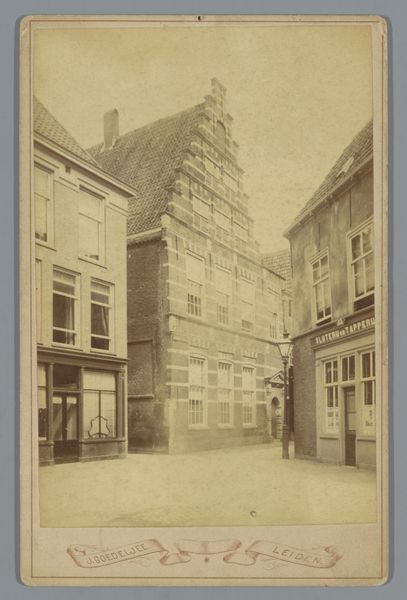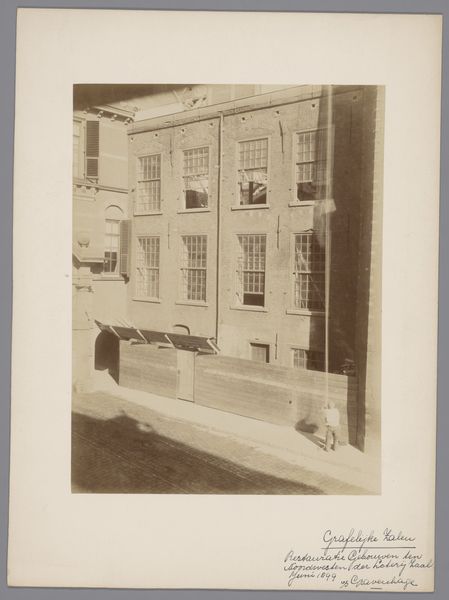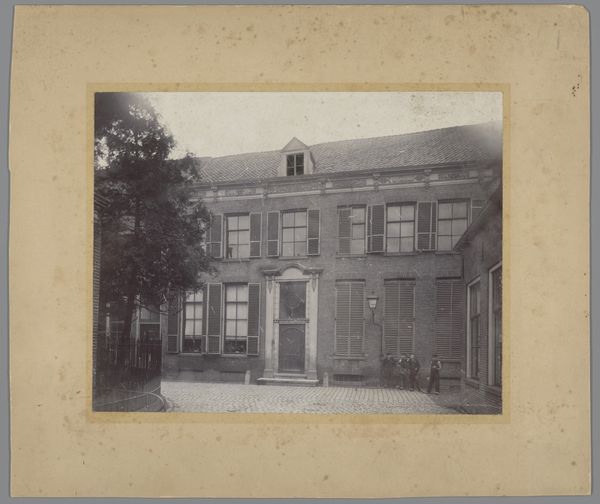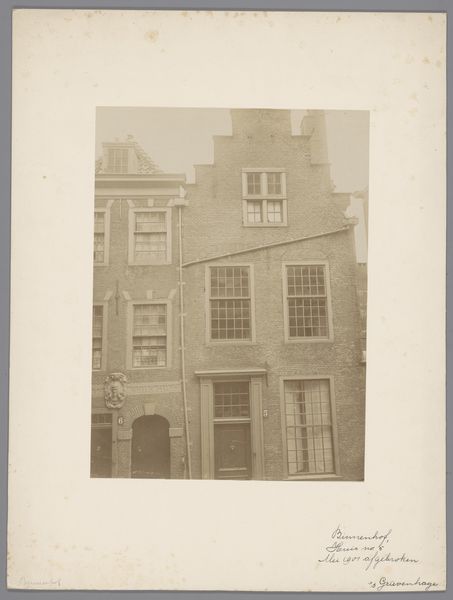
Dimensions: height 225 mm, width 172 mm
Copyright: Rijks Museum: Open Domain
This albumen print shows houses on the Binnenhof in The Hague. Though we don't know who took it or exactly when, it was made by Monumentenzorg, the Dutch national heritage agency. The photograph’s sepia tones indicate a chemical process which has influenced its appearance. Introduced in the 1850s, albumen printing created images from a glass negative, coated with egg white, and exposed to light. It was a popular commercial method for producing photographs, and was used for portraits and landscapes. Though the subject matter appears to be about architecture, the photograph’s mode of production is tied to wider social issues of labor and consumption. It depended on the skilled labor of the photographer, but also the mass production of materials, like glass plates, paper, and chemicals. The final result blurs the boundaries between art, craft, and industry. Paying attention to these factors allows us to fully understand the photograph’s meaning.
Comments
No comments
Be the first to comment and join the conversation on the ultimate creative platform.
